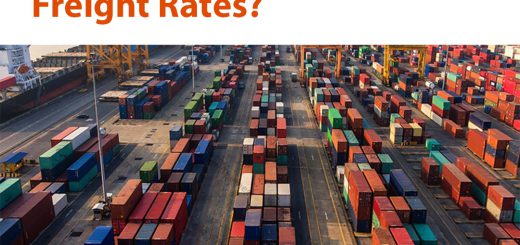Key Components to Maximize Supply Chain Success
In today’s globalized economy, supply chain success plays a critical role in the growth and sustainability of businesses. A well-crafted and efficient supply chain can significantly enhance a company’s competitive advantage, customer satisfaction, and profitability. Organizations strive to optimize their supply chains to achieve agility, global reach, and efficient speed. In this article, we will explore these three key factors and how they contribute to maximizing supply chain success.
3 Key Factors of Supply Chain Success
Agility:
The concept of agility in supply chain management refers to the ability of an organization to respond quickly and effectively to changes in demand, market conditions, or disruptions. An agile supply chain is characterized by flexibility, adaptability, and proactive decision-making. It allows companies to stay ahead of the competition, meet customer expectations, and navigate through uncertainties successfully.
One of the critical aspects of an agile supply chain is effective demand forecasting and inventory management. By accurately predicting customer demand patterns, organizations can maintain the right inventory levels, minimize stock-outs, and reduce excess inventory. This not only enhances customer satisfaction but also leads to cost savings due to optimized inventory levels.
Furthermore, an agile supply chain requires strong collaboration and communication across all stakeholders, including suppliers, manufacturers, distributors, and customers. Timely information sharing ensures that all parties are aligned, enabling faster decision-making and problem-solving. This not only reduces lead times but also enhances the overall responsiveness of the supply chain.
Another essential aspect of supply chain agility is the ability to adjust production and distribution strategies based on market conditions rapidly. This could include dynamic rerouting of transportation routes, shifting manufacturing processes, or adapting pricing strategies. By being able to respond swiftly to changes, organizations can seize market opportunities, mitigate risks, and maintain a competitive edge.
Global Reach:
In today’s interconnected world, businesses operate on a global scale, requiring their supply chains to have a wide reach across various regions and markets. A global supply chain allows organizations to leverage the advantages of globalization, such as accessing new markets, sourcing cost-effective raw materials, and tapping into skilled labor pools.
Expanding the geographical scope of the supply chain, however, brings its own set of challenges. Organizations need to consider factors such as customs regulations, trade barriers, transportation costs, and cultural differences. Therefore, establishing strategic partnerships with reliable suppliers and logistics providers in different regions is crucial to ensure seamless operations.
Technology plays a pivotal role in achieving global supply chain success. Cloud-based platforms, real-time tracking systems, and advanced analytics enable organizations to monitor and manage their global supply chains more efficiently. These digital tools provide visibility into the movement of goods, inventory levels, supplier performance, and demand patterns, allowing for quick decision-making and proactive problem-solving.
Moreover, organizations with a global supply chain need to maintain effective risk management strategies. Events such as political instability, natural disasters, or global crises can significantly disrupt supply chain operations. Therefore, diversifying sourcing locations, building redundancy in transportation networks, and having contingency plans in place are essential to minimize the impact of such disruptions.
Efficient Speed:
In today’s fast-paced business environment, speed is a critical aspect of supply chain success. Organizations that can deliver their products or services quickly and reliably have a significant competitive advantage. Efficient speed in the supply chain ensures customer satisfaction and helps reduce lead times and optimize working capital.
Efficient speed starts with streamlining internal operations and eliminating any inefficiencies or bottlenecks. Lean principles and process optimization methodologies, such as Six Sigma, can help identify and eliminate waste, improve productivity, and enhance the overall flow of goods and information through the supply chain.
The implementation of advanced technologies, such as automation, robotics, and artificial intelligence, has revolutionized the speed and efficiency of supply chains. Automated order processing, warehouse management systems, and intelligent forecasting algorithms enable organizations to process orders faster, reduce errors, and accelerate order fulfillment.
Another crucial aspect of supply chain efficiency is transportation logistics. Optimal route planning, use of multi-modal transportation, and effective last-mile delivery strategies help organizations reduce transit times, lower transportation costs, and improve overall customer experience.
Moreover, organizations can leverage external partnerships and collaborations to enhance the speed and efficiency of their supply chains. This could include working closely with key suppliers to improve lead times, establishing strategic alliances with logistics providers to gain access to their networks, or forming partnerships with technology companies to leverage their expertise in developing supply chain solutions.
Conclusion:
In a rapidly changing and fiercely competitive business landscape, supply chain success is crucial to the success and sustainability of organizations. By focusing on agility, global reach, and efficient speed, companies can maximize the potential of their supply chains. Embracing agile practices allows organizations to navigate uncertainties, respond to changes, and stay ahead of the competition. Expanding the global reach of the supply chain enables organizations to access new markets, optimize costs, and tap into global resources. Finally, efficient speed ensures quick and reliable delivery, improved customer satisfaction, and reduced costs. Organizations can achieve competitive advantage, sustain profitability, and thrive in the dynamic business environment by prioritizing these factors and continuously striving to enhance their supply chain capabilities.




Recent Comments